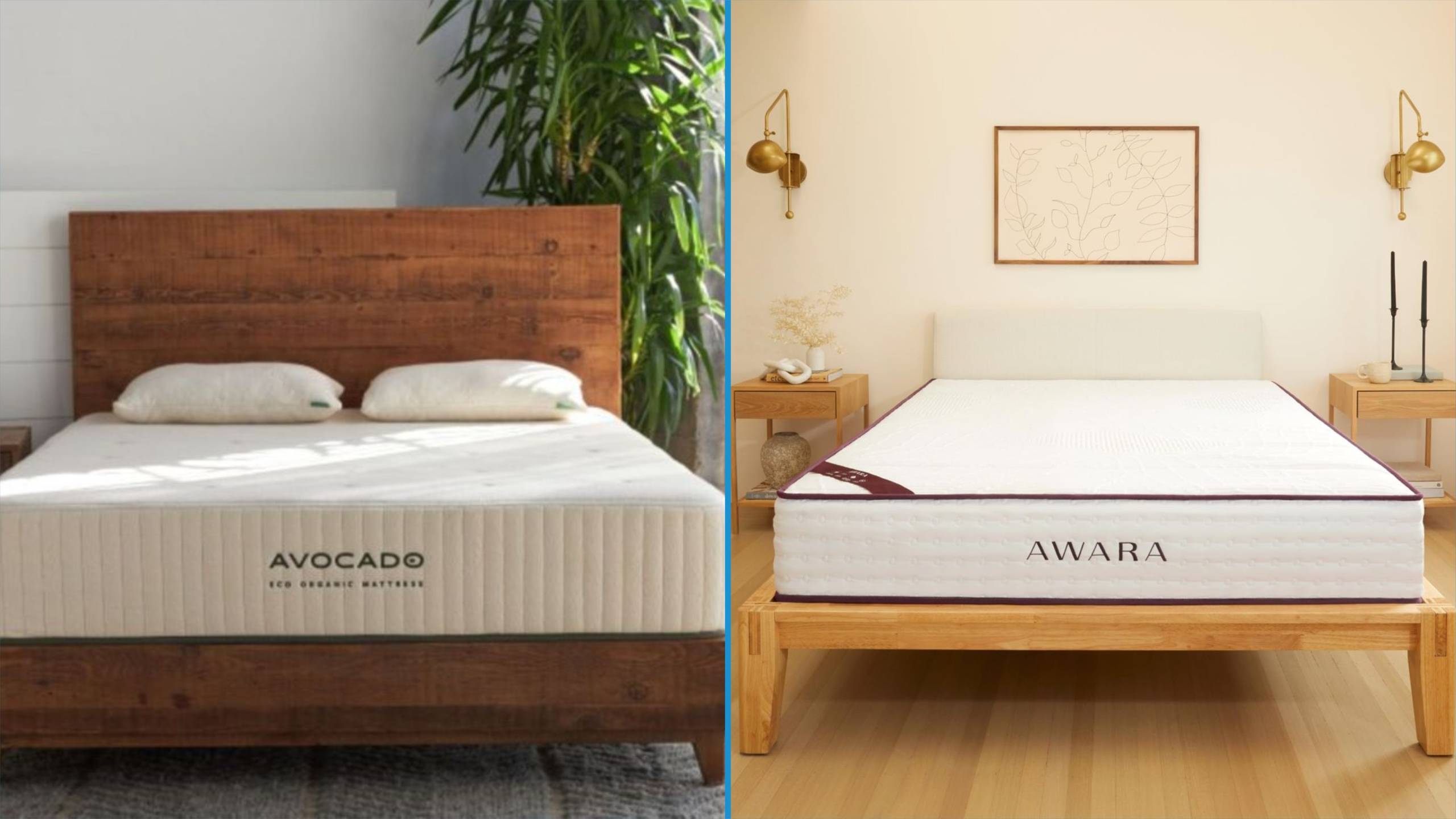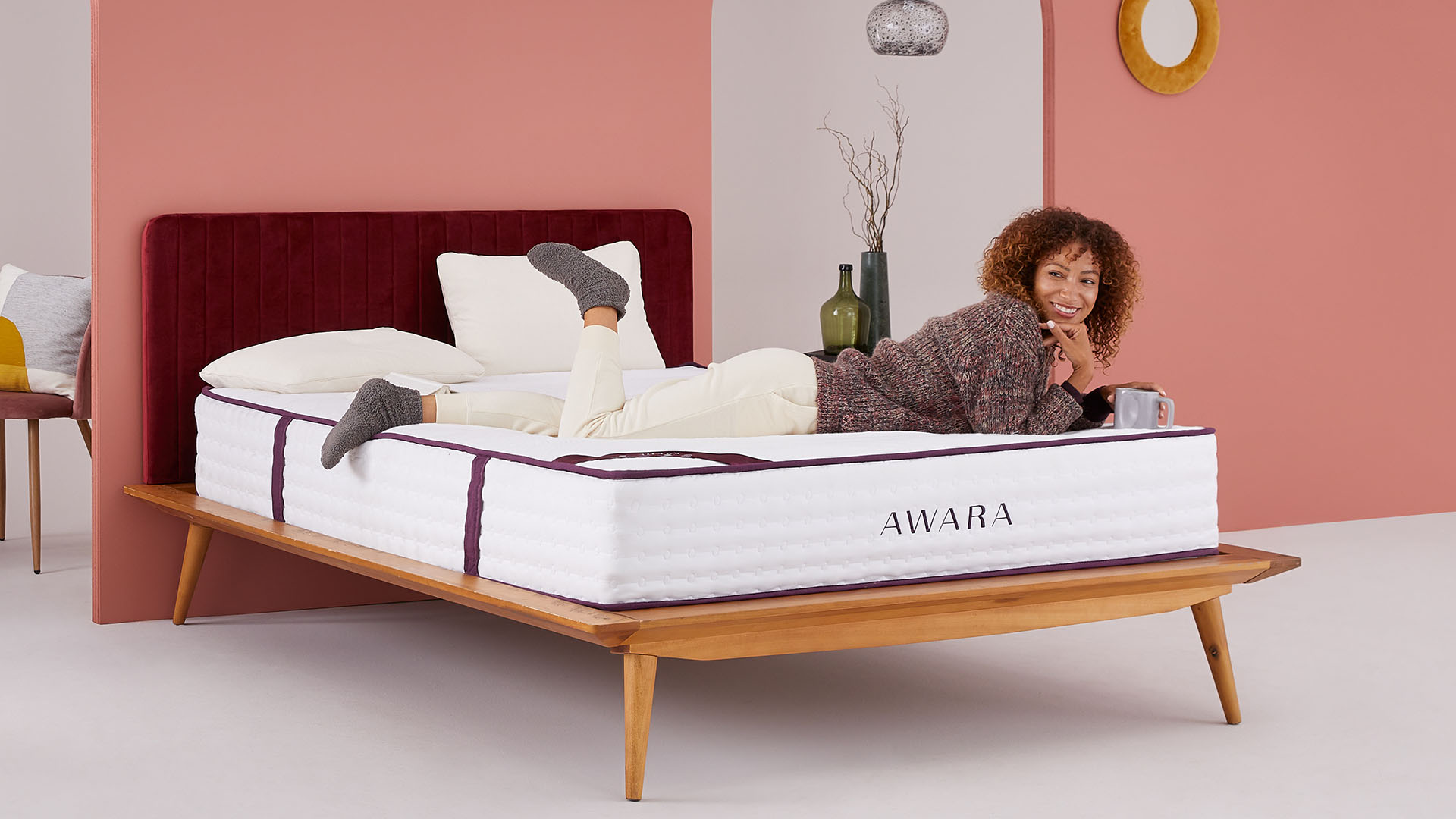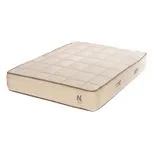Dunlop vs Talalay latex: Which natural mattress material is best for your sleep?
Dunlop and Talalay latex are naturally cooling, pressure relieving and durable, but the price difference is huge

Latex has become a popular material in the mattress world thanks to its natural cooling abilities, durability and eco-friendliness. There are two types of hypoallergenic latex: Dunlop and Talalay. While you can't go wrong with either latex in terms of quality and sustainability, there are some key difference between the two, especially price.
When choosing the best mattress for your sleep needs, body and budget, latex mattresses will no doubt pop up on your radar because they are cooling, supportive, long-lasting and capable of deep pressure relief. But how do you pick between a Dunlop vs Talalay latex mattress? Here we discuss the pros and cons of both types, how they're made, and which one will suit your sleep the most.
Plus, we look at some of the best organic mattresses that use these non-toxic latex foams, and which latex beds you should keep an eye out for in the upcoming Presidents' Day mattress sales.
Dunlop and Talalay latex: An overview
Dunlop refers to the method in which this type of latex foam is made. Out of Dunlop vs Talalay latex, Dunlop is the oldest (created in the 1920s) and the simplest method. Both types of latex start life as sap in the rubber tree, which is then mixed with non-toxic materials and whipped into a froth.
However, the next steps are unique to Dunlop latex. The froth is poured into a mould all the way to the top, and then baked, removed from the mould, washed, and then baked again.
Talalay is a slightly younger method, having been invented in the 1940s. Instead of the latex froth being poured to fill the mould, it only partially fills the mould. Next, its vacuum sealed, so the liquid expands, and then frozen, baked, washed and dried.
Dunlop vs Talalay latex in mattresses: Key differences

One of the biggest differences between Dunlop vs Talalay latex is the sleep feel. Talalay has a softer, spongier feel, which feels bouncy and plush. As its the more cushioning of the two, Talalay is often used as a comfort layer in hybrid mattresses, pillows, and the best mattress toppers.
Get instant access to breaking news, the hottest reviews, great deals and helpful tips.
Dunlop, on the other hand, has a denser, firmer feel, which means it's often used for support layers in hybrid beds and in all-foam latex mattresses. As it's denser, it also tends to be more durable than Talalay, while its simple process means it's more energy-efficient, cheaper to produce, and less expensive to buy.
However, Talalay latex has a more evenly consistent feel as, during the manufacturing process, the latex batter has expanded to fill the entire mould. Dunlop, on the other hand, is more uneven and heavier at the bottom.
Dunlop vs Talalay latex in mattresses: Brands and prices
As Dunlop is simpler, and therefore cheaper to make, Dunlop beds tend to be more affordable than onesmade from Talalay. However, either type of latex mattress does not come cheap. Our favourite affordable Dunlop latex beds has a starting MSRP of $1,299, while our favourite luxury latex bed has a starting MSRP of $1,995.

You'll usually find either type of latex in the mattresses of eco-luxury sleep brands, such as Awara, Avocado, Birch Living, and Turmerry. However, non-eco mattress brands have also introduced eco-friendly latex models, such as Saatva, WinkBed, and Nolah.
Dunlop vs Talalay latex in mattresses: Pros and cons
The pros of a Dunlop latex mattress:
They're more energy efficient. Due to its simple process, Dunlop beds are much more energy-efficient to make, making them the greener option.
They're cheaper. Their simple manufacturing process also mean Dunlop latex mattresses are less expensive to make.
They are denser and more durable. Because of its higher density, Dunlop latex is lasts slightly longer than Talalay.
The cons of a Dunlop late mattress:
They have an inconsistent feel. Due to its process of being baked and set, there's an uneven feel throughout a Dunlop bed, being denser on the bottom.
They're not as breathable. While both types of latex sleep cool, Dunlop is less porous than Talalay, so its also slightly less breathable.
They don't provide as much comfort. Dunlop is great for adding supporting layers in hybrid beds, and its density and sturdiness means it's the best type of latex to use in an all-latex bed. However, it's not as soft and cushioning than Talalay, and less likely to be found in bed toppers and pillows.

The pros of a Talalay latex mattress:
They're more breathable. Because of the way its vacuum sealed during production, the Talalay foam is more porous and therefore more breathable.
They have a consistent, even feel. As the Talalay latex batter expands to completely fill the mould, it has a much more uniform feel.
They're great at providing comfort. As it has a lower density, Talalay provides more cushioning and is often used as a comfort layer in mattresses and in some of the best pillows.
The cons of a Talalay latex mattress:
They are not GOLS-certified. Due to the way it's produced, Talalay latex can never pick up a certification from the Global Organic Latex Standard (GOLS), which verifies that a product contains more than 95% of certified organic raw material of the total weight.
They are not as durable. Due to their relative lack of density and plusher feel, Talalay is less durable than Dunlop.
They are more expensive. Due to their more complex production and more even feel, Talalay mattresses tend to cost more than Dunlop beds.
Dunlop vs Talalay latex in mattresses: Which should you buy?
Buy a Dunlop latex mattress if...
✅ You want a 100% latex foam bed: Although 100% latex beds are sometimes made using a mixture of the two types, Dunlop is durable and supportive enough to make an entire bed.
✅ You're on a tighter budget: The cheaper manufacturing process means a cheaper bed, with many of the most affordable latex mattresses featuring Dunlop.
✅ You want the more eco-friendly bed: With a more sustainable, energy-efficient process and a GOLS-certification, Dunlop latex is the greener out ot the two.
Buy a Talalay latex mattress if...
✅ You're looking for plush comfort: Talalay has a lower density, meaning that it provided more cushioning and a softer feel.
✅ You sleep hot: Talalay is more porous, adding more breathability for a cooler night's sleep.
✅ You want a consistent feel: Talalay provides uniform comfort throughout thanks to its manufacturing method.
Top Dunlop and Talalay latex mattresses on sale now
Avocado Green Mattress: from $1,399 $1,259 at Avocado Mattress
This stunning , needle-tufted organic bed is made with FSC-certified Talalay latex. It's handmade in Los Angeles from sustainable materials including GOLS-certified organic latex, and GOTS-certified organic wool and cotton. The Avocado Green Mattress is the brand's flagship bed, made from natural latex and up to 1,459 individually wrapped support coils for continued support and pressure relief. This month's Avocado mattress deals will save you up to 20%, with a queen size firm mattress starting from $1,799 (softer versions cost from $450 more).
Nolah Natural 11": from $1,499 $974 at Nolah Sleep
The Nolah Natural 11" mattress has a two-inch layer of Talalay latex which offers exceptional pressure relief. It also sleeps naturally cool and is particularly good for back sleepers. It also comes with a moisture-wicking organic cotton cover. Right now, Nolah's having an early access Presidents' Day sale, so this non-toxic mattress is 35% off. The mattress comes with a 120-night sleep trial and a lifetime warranty.
Awara Natural Hybrid Mattress: from 1,299 $649 at Awara Sleep
This Dunlop hybrid bed is one of the most affordable organic mattresses in America, and is now even cheaper thanks to the current 50% off sale. This bed is excellent value for money when you take into account its responsiveness and luxurious thickness. Generous extras include a lifetime warranty and a 1-year trial.
PlushBeds Botanical Bliss organic mattress: from $2,449 $1,199 at PlushBeds
This 100% latex mattress uses both natural Talalay and Dunlop, and you can customise by choosing your height and firmness rating. Right now, you can get $1,250 off all sizes and up to $599 in free bedding. While the price remains the same regardless of firmness, the taller models are more expensive. Extras include 100-night sleep trial and a lifetime warranty.

Frances Daniels is a PPA-accredited journalist and Sleep Staff Writer at Tom's Guide with an MA in Magazine Journalism from Cardiff University. Her role includes covering mattress and sleep news and writing sleep product reviews and buyer's guides, including our Best Hybrid Mattress 2025 guide. She is interested in the relationship between sleep and health, interviewing an array of experts to create in-depth articles about topics such as nutrition, sleep disorders, sleep hygiene, and mattress care. She is also our specialist on mattress toppers — producing bed topper reviews and taking care of our Best Mattress Toppers 2025 guide — and leads content relating to fiberglass-free beds for a non-toxic sleep. Outside of Tom's Guide, she has written for Ideal Home and Marie Claire.




